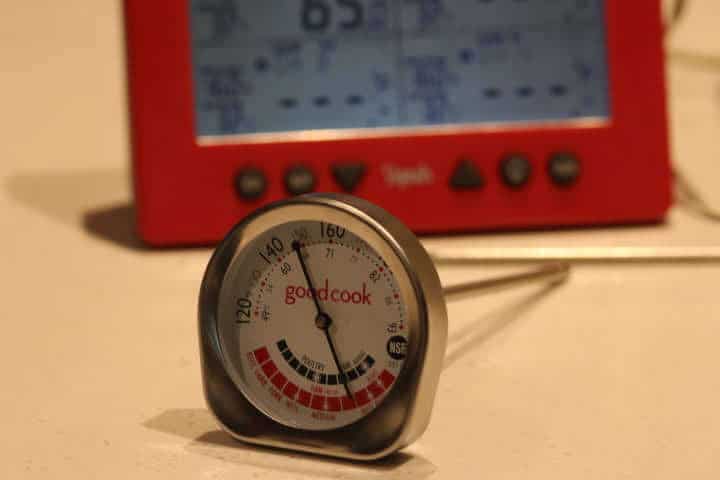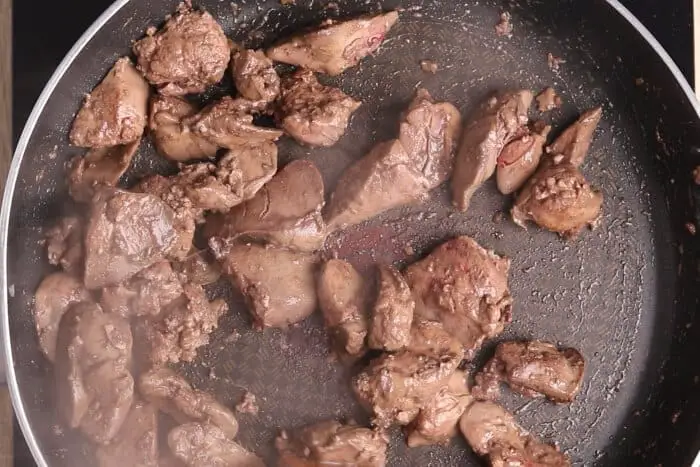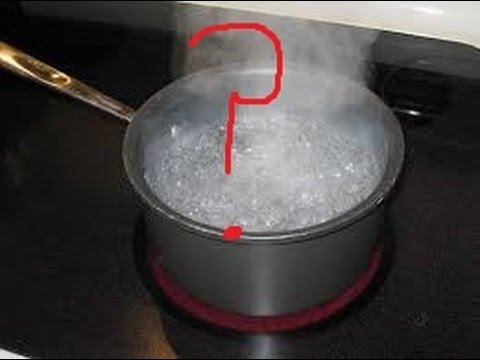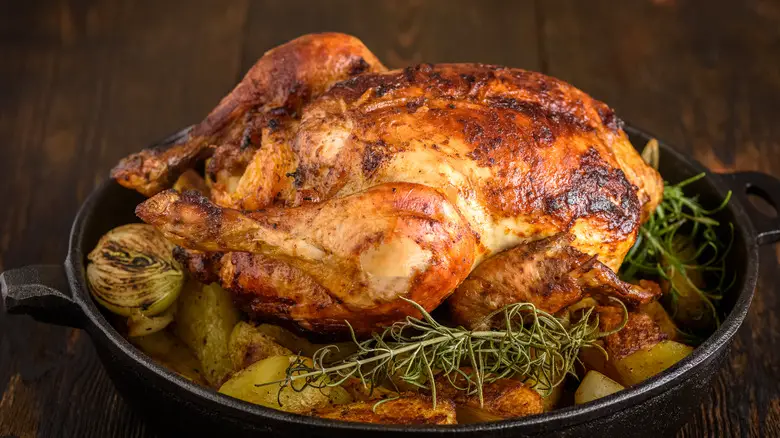How to Read a Good Cook’s Meat Thermometer
Cooking meat can be tricky, but with the help of a good meat thermometer, it becomes much easier. A meat thermometer ensures accurate readings so you can cook your meat to safe temperatures and avoid the risk of foodborne illness. If you’re not sure how to use a meat thermometer or want to brush up on your skills, we’ve got you covered. In this article, we’ll cover everything you need to know about reading a good cook’s meat thermometer.
Types of Meat Thermometers
There are several types of meat thermometers available on the market. Each type has its unique features and benefits.
Instant-Read Thermometers
An instant-read thermometer is an inexpensive and straightforward option for taking quick temperature readings. It has a metal probe that provides an almost instantaneous temperature reading as soon as it’s inserted into the thickest part of the meat.
Digital Thermometers
A digital thermometer is more precise than an instant-read thermometer. It works by using electronic sensors that measure the temperature inside the meat and display it on a digital screen attached to the device.
Analog Thermometers
An analog thermometer is similar in design to an instant-read thermometer, but it operates differently. It has a glass face dial with numbers markings around its circumference that displays temperature readings when inserted into cooked meats.
Using an Instant-Read Meat Thermometer
An instant-read thermometer is easy to use and perfect for quick temperature readings. Here are some steps on how to use one effectively:
- Ensure your instant-read thermometer is calibrated before use.
- Insert the probe into the thickest part of the meat without touching any bones.
- Wait for 5-10 seconds for accurate temperature readings.
- Ensure you take multiple readings across different parts of the same cut of meat for consistency.
- Clean your instant-read thermometer after each use by wiping it down with a clean cloth.
Using a Digital Meat Thermometer
Digital meat thermometers are more precise than instant-read thermometers. Here’s how to use them:
- Ensure your digital thermometer is calibrated before use.
- Insert the probe into the thickest part of the meat without touching any bones.
- Wait for the digital temperature reading display to stabilize on the screen (usually within 5-10 seconds).
- Remember not to leave digital thermometers inside hot dishes unconsciously, as they can damage or break.
- Clean your digital thermometer by wiping it down with a clean cloth.
Using an Analog Meat Thermometer
Analog meat thermometers are older models but still have their benefits. Here’s how to use one:
- Insert the probe into the center of the meat, trying not to touch any bones or fat
- Wait for several seconds before checking its readings
- Analog thermometer displays usually show safe temperatures for cooking beef, poultry, and pork in their packaging instructions, respectively.
- Clean your analog thermometer after every use with soap and water.
Analog thermometers may be less accurate than their digital counterparts. They also take longer readings too, making them less efficient than both instant-read and digital thermometers.
Understanding Safe Cooking Temperatures for Meat
It’s essential to know what internal cooking temperature is safe for various types and cuts of meat when using a thermometer properly.
Safe minimum internal temperatures recommended by USDA:
- Whole cuts of Beef, Pork, Lamb and Goat – 63°C (145°F)
- Ground beef, veal -73°C (160°F)
- Poultry including chicken breasts – 74°C (165°F)
Cooking meats above these temperatures helps eliminate harmful bacteria like Salmonella or E.coli that cause food poisoning among others.
Troubleshooting Common Problems
Sometimes, you might face issues like inaccurate readings or broken thermometers. Here are some solutions to common problems.
Inaccurate Readings
Inaccurate readings could be due to a thermometer that isn’t calibrated properly, user error, or misreading of the thermometer’s specifications. To ensure accurate readings:
- Calibrate your thermometer at regular intervals
- Follow the manufacturer’s instructions
- Clean your thermometer after every use
Broken Thermometers
If your meat thermometer is broken, it’s essential to dispose of it immediately and buy a new one. Here are ways to avoid breaking them;
- Avoid leaving thermometers inside hot dishes when not in use
- Don’t drop or knock the thermometer accidentally
- Store your thermometer properly in its case when not in use.
Cleaning and Maintaining Your Thermometer
Proper cleaning and maintenance will ensure that your meat thermometer lasts long.
Here is how you clean it.
- Wipe down the probe with mild soap and warm water
- Clean any leftover food debris from the probe using a soft sponge.
- Rinse under running water and dry with a clean paper towel.
- Store after every use in their cases for maximum protection.
Conclusion
Using a meat thermometer correctly can help ensure safe and well-cooked meats for all occasions. They come in different types (digital, instant-read) but serve the same purpose- safe cooking! Make sure you choose the right type of thermometer according to your needs because they have different features and accuracy levels.
Ensure proper maintenance by cleaning them after every use, keeping them properly stored, calibrating regularly – Doing so, you’ll have accurate reading for however long as you own them.
Q&A
Q1. Why is it important to use a meat thermometer when cooking?
Using a meat thermometer is crucial to ensure that the food you are cooking is safe and free from harmful bacteria. It also helps you achieve consistent cooking results every time, whether you prefer your steak rare or well-done.
Q2. What should I look for in a good quality meat thermometer?
A good quality meat thermometer should be easy to read, accurate, and have a fast response time. It should also have a temperature range suitable for the type of meat you will be cooking.
Q3. How do I use a meat thermometer correctly?
To use a meat thermometer correctly, insert the probe into the thickest part of the meat, making sure not to touch any bones or gristle. Wait for it to give an accurate reading before removing it from the meat.
Q4. Can I rely on my senses alone to judge if my meat is cooked properly?
No, relying on your senses alone to judge if your meat is cooked properly can be misleading and dangerous. Bacteria cannot be seen, tasted or smelled and some meats may appear fully cooked but may still pose health risks without proper temperature checks by using a reliable good cook’s with quality thermometers.





